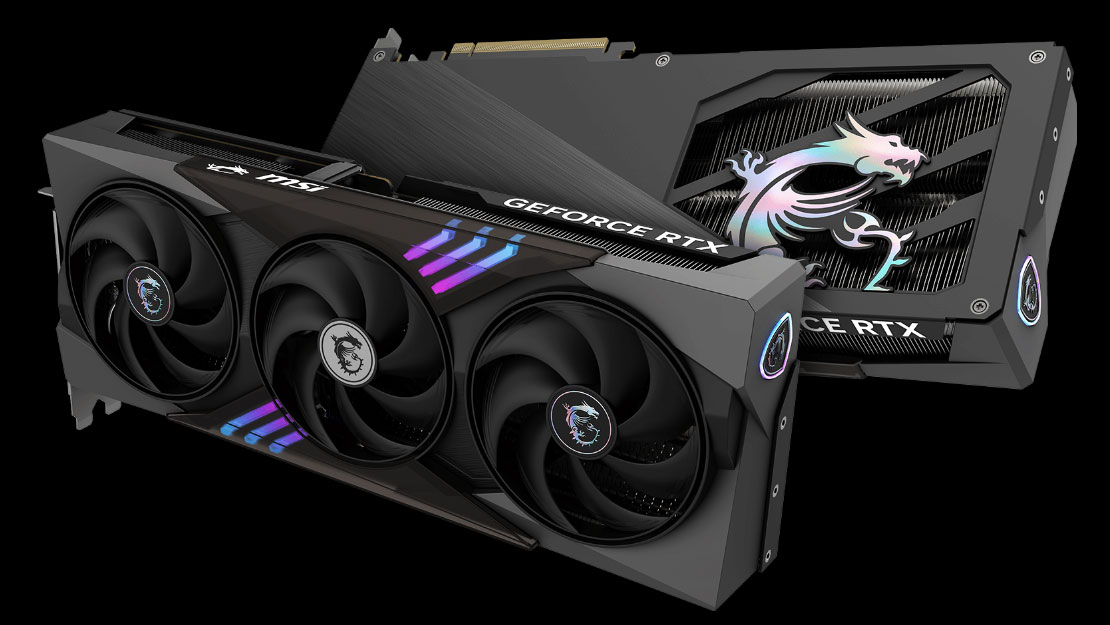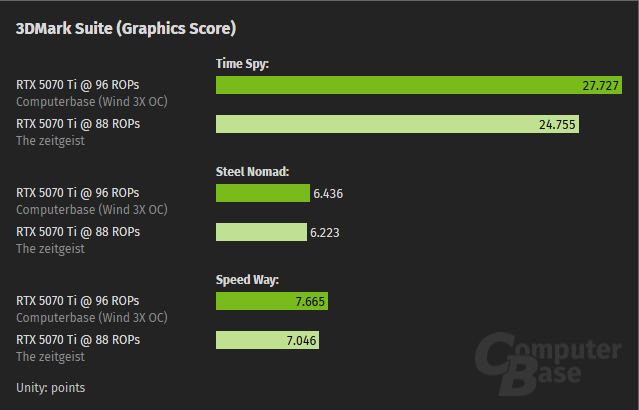RTX 5070 Ti manufacturing defect cuts performance by up to 10% — 88 ROPs vs 96 ROPs (design)
Model tested had 8.3% fewer ROPs than the official spec.

As Nvidia confirmed yesterday, a handful of RTX 50 GPUs have been affected by a manufacturing defect resulting in fewer ROPs than specified. The impacted GPUs, per Nvidia, include the RTX 5090 and the RTX 5070 Ti; the RTX 5080 is seemingly unaffected, with no reports having emerged yet. Meanwhile, a user at ComputerBase forums discovered that their RTX 5070 Ti was affected and offered several performance benchmarks for analysis.
The out-of-spec RTX 50 series GPUs news broke when a user at TechPowerUp's forums reported a missing ROP partition (eight ROPs) on their RTX 5090. All attempts through software such as driver reinstalls, and switching vBIOS versions, were in vain. As the news spread, more users started to double-check their units, kicking in the domino effect. Eventually, Nvidia confirmed that this "rare" issue resides at the hardware level and only impacts 0.5% of GPUs produced; claimed to decrease performance by 4%.
It's unclear how Nvidia greenlit defective GB202 and GB203 chips, which are also subject to testing by AIB partners. In any case, a user with the alias "Der Zeitgeist" reported their MSI RTX 5070 Ti Gaming Trio had defective silicon, containing 88 ROPs instead of the specified 96, as confirmed by the Nvidia white paper. The user provided several benchmarks of their "nerfed" unit, and the performance gap can be as high as 12% in some scenarios.

In 3DMark Time Spy, the cut-down RTX 5070 Ti accumulated 24,755 points, 10% lower than ComputerBase's MSI Ventus OC variant with all 96 ROPs present. In other benchmarks that aren't exactly ROP-intensive, the difference is minimal but still noticeable.
What's intriguing is that the RTX 5080 remains unaffected, built using the same GB203 chip as the RTX 5070 Ti. This hardware defect may explain Nvidia's decision to push the budget RTX 5070 back to early March. Affected customers have been asked to contact their respective board partners for a replacement, which might take a while given the ongoing Blackwell shortages.
Melting concerns, PCIe stability issues, lack of supply, and now defective silicon have plagued the RTX 50 family launch. The silver lining is that the supply aspect of these problems is rumored to improve starting next month, coincidentally aligning with AMD's RDNA 4 launch.
Get Tom's Hardware's best news and in-depth reviews, straight to your inbox.

Hassam Nasir is a die-hard hardware enthusiast with years of experience as a tech editor and writer, focusing on detailed CPU comparisons and general hardware news. When he’s not working, you’ll find him bending tubes for his ever-evolving custom water-loop gaming rig or benchmarking the latest CPUs and GPUs just for fun.
-
A Stoner How little actual resources and care are they leaving for consumer graphics cards with this many failures?Reply -
WINTERLORD I knew when they had the major issues of Blackwell server ai cards that top end chips would likly get the shift ,the leftovers as there not as valuable as AI cards for buisness.Reply
Now if someone beats nvidia in the gpu for gamer realm than maybe be better but when ur talking 10to15percent year over year I can't see why anyone would wanna upgrade I love nvidia always had nvidia cards but 10percent drop bought nullifies gen on gen performance I would think -
Shiznizzle Reply
And for that %5 improvement over last gen you can fork over huge sums. 749 retail? You wont see that. Maybe in a few months, most likely never.WINTERLORD said:I knew when they had the major issues of Blackwell server ai cards that top end chips would likly get the shift ,the leftovers as there not as valuable as AI cards for buisness.
Now if someone beats nvidia in the gpu for gamer realm than maybe be better but when ur talking 10to15percent year over year I can't see why anyone would wanna upgrade I love nvidia always had nvidia cards but 10percent drop bought nullifies gen on gen performance I would think
I have a 3060 so should see a substantial improvement considering i am jumping two whole tiers. Instead i get one tier in the 4000 series and half a tier with the 5000 series, it seems. So in essence a %15 or %20 improvement on my 3060 for jumping two whole tiers. Mad.
Not gonna do it. Not for that kind of money. -
bit_user Stuff like this are why I always try to avoid buying new products at launch. Of course, that's no guarantee, as it took more than a year for Raptor Lake's problems to surface.Reply
You can also usually save a bit of money, if you wait - even leaving aside the matter of launch shortages. I get that not everyone has the luxury of being able to wait, but it's a good idea if you can. -
bit_user Reply
No, the server Blackwells they launched last year use a very different design. They do not share the same silicon with any of the RTX 5000 cards.WINTERLORD said:I knew when they had the major issues of Blackwell server ai cards that top end chips would likly get the shift ,the leftovers as there not as valuable as AI cards for buisness.
There will be both workstation and server cards that do share dies with these gaming cards, but they have yet to launch. You can look at prior examples, like the RTX 6000 Ada and L40, which shared the same silicon die as the RTX 4090, for instance.
However, the Hopper H100 and H200 continued a long legacy of HPC/AI chips that had no equivalent client card. And now the Bx00 chips do the same. The last time that ever happened was the V100 that was incorporated into the Titan V, back in 2017. The newer 100-series dies do not even have the necessary graphics functional units needed to use them for gaming, which slams the door shut on that era. -
bit_user Reply
PNY makes a RTX 5070 Ti with that MSRP. If I bought a RTX 5070 Ti, I might be tempted to go with that one, since PNY also made Nvidia's workstation and server cards, at least in the past - not sure if that's still true. Those cards had like 5 year warranties, which tells me PNY is not just any second-tier brand.Shiznizzle said:749 retail? You wont see that. Maybe in a few months, most likely never. -
bit_user Reply
If you haven't been following the saga of their HPC/AI Blackwells, it hasn't only been on client GPUs that Nvidia has been slipping up, lately.A Stoner said:How little actual resources and care are they leaving for consumer graphics cards with this many failures?
Not to excuse Nvidia's failures, but I think it's worth considering that each new GPU generation is the fastest and most complex ever launched. So, they not only have to get right all of the challenges they mastered in the past, but also new challenges they didn't face before. On top of all that, they keep increasing power limits, which poses new challenges - and that's where a lot of their stumbles have been.
That said, we should expect and demand better from one of the world's most valuable companies. I'm just saying, as someone who works in tech, I try to keep a little humility and remember that perfection is always an ideal but rarely a reality. -
hotaru251 ReplyIt's unclear how Nvidia greenlit defective GB202 and GB203 chips, which are also subject to testing by AIB partners.
they likely didn't care as they know most people aren't going to find out